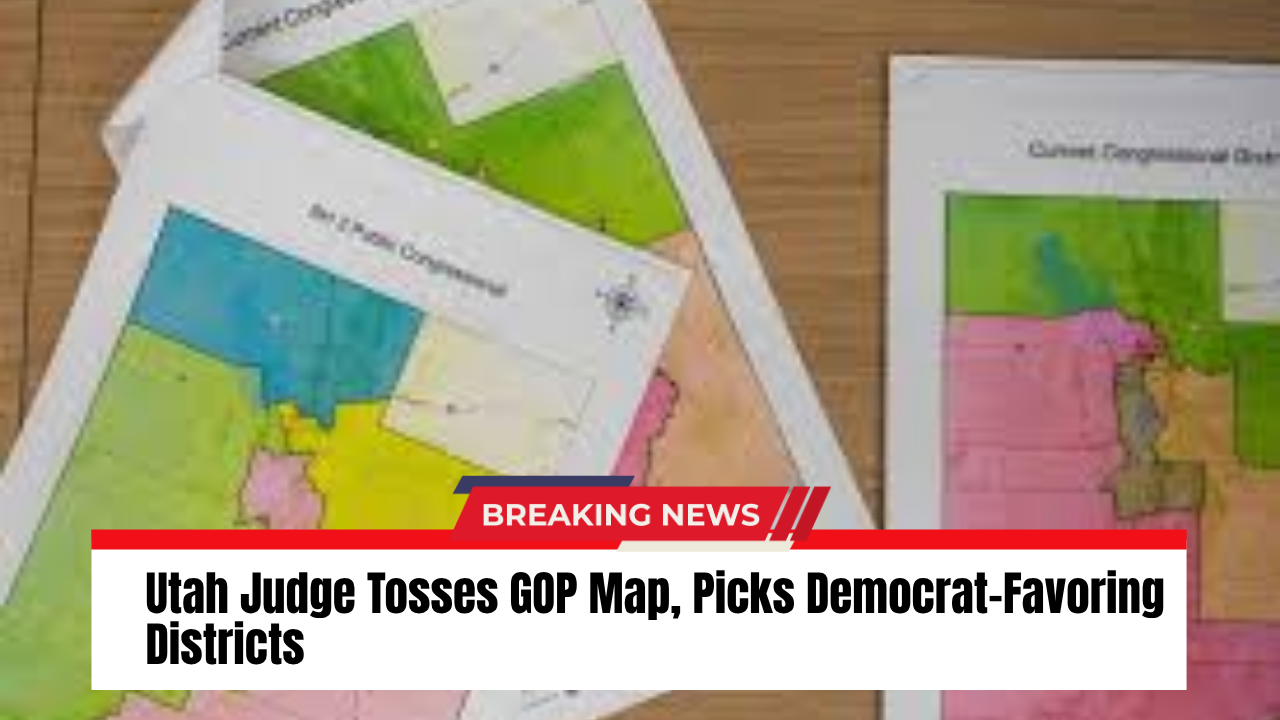SALT LAKE CITY — In a landmark ruling, Third District Judge Dianna Gibson has thrown out the Utah Legislature’s congressional map, calling it an “extreme partisan gerrymander” that violated state law. Instead, she selected an alternative map proposed by plaintiffs that creates Utah’s first Democrat-leaning congressional district in a quarter century.
“The Legislature’s map does not comply with Utah law,” Gibson wrote in her 65-page decision released late Monday night. With the lieutenant governor’s November 10 deadline for certifying district boundaries fast approaching, Gibson said the court had no choice but to step in. “The Court bears the unwelcome obligation to ensure that a lawful map is in place.”
A Major Shift in Utah’s Political Landscape
The new court-approved map centers a heavily Democratic district in northern Salt Lake County, encompassing Salt Lake City and surrounding areas down to West Jordan, while dividing Utah County into eastern and western halves. The remaining three districts will remain solidly Republican.
Analysts estimate the new Salt Lake County-based district favors Democrats by more than 17 percentage points, while the other three seats remain safe for Republicans. It’s the first time since the late 1990s that Utah will have a competitive congressional seat leaning blue.
The decision caps a four-year legal battle over the repeal of Proposition 4, known as the Better Boundaries initiative, which voters approved in 2018 to establish an independent redistricting process. Lawmakers later repealed key parts of that initiative, prompting lawsuits from groups including the League of Women Voters, Mormon Women for Ethical Government, and several individual voters.
In 2024, the Utah Supreme Court ruled that lawmakers had violated the state constitution by nullifying Proposition 4, sending the case back to Gibson for enforcement.
Judge Rejects GOP “Statistical Tests” and Partisan Data Use
Republican legislators submitted their own revised map earlier this fall, claiming it met “neutral statistical standards.” But Gibson rejected their methodology as “deeply flawed” and inconsistent with Proposition 4’s nonpartisan requirements.
She also found that the legislative map had been drawn using partisan election data — something explicitly prohibited by the initiative. During court testimony, the Legislature’s expert witness admitted that election results were visible while drawing district lines.
Gibson instead adopted the plaintiffs’ first proposed map, which she said “better satisfies the redistricting standards and requirements contained in Proposition 4.”
Political Fallout: Accusations of “Judicial Activism”
Republican lawmakers swiftly condemned the ruling. Rep. Candice Pierucci (R–South Jordan) called it “a clear example of judicial activism,” accusing Gibson of overriding the will of voters. House Speaker Mike Schultz (R–Hooper) vowed to defend the Legislature’s redistricting authority “by whatever means necessary.”
Within hours, Rep. Matt MacPherson (R–West Valley City) announced plans to file a bill to impeach Judge Gibson, alleging “gross abuse of power” and violation of the state constitution.
Legislative Democrats, by contrast, hailed the decision as a turning point. “We feel a deep sense of hope and relief,” said one party statement. “This is a win for every Utahn who believes voters — not politicians — should choose their representatives.”
Next Steps: Appeals and Political Ramifications
Republican leaders signaled they plan to appeal the ruling to the Utah Supreme Court and potentially the U.S. Supreme Court. Meanwhile, Lt. Gov. Deidre Henderson confirmed she will implement the court-ordered map unless directed otherwise by an appellate court.
Former U.S. Rep. Ben McAdams, who briefly held Utah’s 4th District seat, has already scheduled a campaign launch for Nov. 13, fueling speculation that Democrats are preparing to contest the newly drawn district. State Sen. Kathleen Riebe (D–Cottonwood Heights) and others are also rumored to be considering bids.
National Stakes: One Seat Could Shift Congress
Utah’s redistricting fight carries national significance. With Republicans holding a slim six-seat majority in the U.S. House, even one newly competitive district could shape the balance of power after the 2026 midterms.
Legal experts say the case underscores a growing national trend as courts in both red and blue states intervene in extreme partisan redistricting efforts. “This decision places Utah at the center of the national debate over who controls the mapmaking process — legislators or voters,” said a University of Utah political scientist.
As Utah moves to implement its first Democrat-leaning district in 25 years, one thing is certain: the political map of the Beehive State has been redrawn — both literally and historically.
For full court filings and map visualizations, visit the Utah State Courts website and Better Boundaries Utah.



